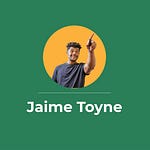Hey Listener,
Today, I introduce you to Taha Ebrahimi, the author and illustrator of the book "Street Trees of Seattle, an Illustrated Walking Guide."
Taha's journey from Director at Tableau Public to an accidental author is filled with insights about curiosity, the power of storytelling, and the intersection of technology and nature.
We discussed:
👉 How exploring skills outside your comfort zone can lead to unexpected and fulfilling projects.
👉 The intersection of curiosity, data, and storytelling in creating valuable and impactful work.
👉 Taha's philosophy on balancing professional and personal passions to create meaningful results in both spheres.
👉 The surprising historical and cultural insights revealed through Seattle's street trees and what we can learn about how to make things that resonate with fans.
Taha’s Accidental Journey into Book Writing
During the interview, Taha shared how she started exploring Seattle's street trees out of pure curiosity during the pandemic.
Her walks, guided by personal interest rather than professional goals, eventually led to the creation of her book, which is now a Pacific Northwest bestseller.
Highlights include:
The importance of taking time to be curious and its role in producing meaningful work.
How Taha used both analog and digital tools to compile and validate data for her book.
The cultural and historical stories revealed by Seattle's diverse tree population.
Taha’s book "Street Trees of Seattle, an Illustrated Walking Guide." is available at major online retailers and in independent bookstores in Seattle.
Follow Taha on Instagram and TikTok @treeswithtaha
She leads monthly street tree walks for those interested in exploring Seattle's street trees with Taha. These walks are announced via her newsletter, which you can sign up for through her social media pages.
Thank you for tuning in. I hope this episode fills you with as much curiosity and inspiration as it did me.
Cheers!
Caden Damiano
caden@hey.com
Don’t Have Time to Listen? Here are Some Actionable Takeaways
Paid Subscribers get to save time and learn from every interview without having to listen every time.
👑 Access to the actionable takeaways section of the podcast article,
A breakdown of the insights from this episode.
A pull quotes from the interview highlighting the lesson.
An “action tip” prompt you can apply to your career.
👑 BONUS weekly newsletter & podcast, “3 Minute Mentor”
3MM consolidates my network of mentors to answer career questions in 3-minute reads.
3MM also has occasional podcast interviews where I model how I get mentored by my career “board of advisors” so you can learn the soft skills to build your own.
3MM It also provides a digest of all actionable takeaways from recent episodes.
All annual plans have a 100% money-back guarantee. If you aren’t satisfied, email me at caden@hey.com for a refund.
Actionable Takeaways
Curiosity is the “X Factor” in a Meaningful Career
Taha emphasized the importance of curiosity as a driver of innovation and meaningful work. A strict professional path did not guide her career and the creation of her book. It was by a genuine interest in the problems she was solving.
“it was around that time I started researching, you know, whether there were street tree data sets out there.
And it turned out by coincidence that Seattle has one of the best inventories of street trees or trees in the right of way. So that's how I got into the book. It was kind of connected to my job, but kind of connected to my overall philosophy of being Um, curious about things and really, um, going to the nth degree.
And I think that that's the best way to learn, frankly, is when you are led by your own curiosity.”
- Taha Ebrahimi
Action Tip
Let your curiosity guide you when tackling a new project or learning a skill. Engage with your interests and build around them; the learning process will be more rewarding and effective.
Although I always knew that SQL was an important skill to develop, it wasn’t until I was making my apps that it started to click.
Data with Context
Taha's work with Seattle's street trees revealed that data alone isn't enough; context is crucial. By personally validating data, she uncovered historical and cultural stories that pure numbers couldn’t tell.
“Context is everything. Metrics capture one little piece of ‘a truth’, but not the lived experience.”
- Taha Ebrahimi
Action Tip
When working with data, always consider the broader context and real-world validation. This approach will provide a richer and more accurate understanding of the subject.
Over 20% of Seattle's public tree records were inaccurate, so Taha had to go into the field to clean up the data. It’s hard, tedious work to paint a clear picture, so working on a problem that interests you can help give you the energy to fix these issues.
Human Connection in Technology
Despite technological advances, Taha believes that human storytelling remains irreplaceable and vital.
“Human storytelling is the most unique thing about us and will continue to become important…
back in the early 1900s when there was a winter storm in Seattle and the people who lived in that house had some extra, um, heating oil and there was a family near them that couldn't afford any heating oil and they had children and they were freezing during the winter and so they figured out a barter where they gave that family some oil to get through the winter and the family in exchange planted a deodar cedar street tree.And now, decades later, it is the widest deodar cedar street tree in the entire city. And I love stories like that. And I write those little sketches in the book too, but I believe that it is making those trees individual stories or important trees somehow makes them exist in many ways to your point. Like that's what makes them valuable.”
- Taha Ebrahimi
Action Tip
Even when leveraging technology, focus on the human element. Use storytelling to make data and tools more relatable and impactful.
Use the framework Hook, Story, Offer when pitching a solution.
Hook: A compelling fact or polarizing statistic of why your audience will lose something they care about if they don’t listen, like losing time, history, experiences, or Money.
Story: Give the story behind the data. Then, show how the story applies to your audience.
Offer: Offer an alternative to the audience.
Interdisciplinary Innovation
Taha's diverse background in journalism, marketing, and data visualization allowed her to bring unique perspectives to her book project.
“The best projects are by people straddling different worlds, not just specialists…
“you could have AI write your whole website, but you'd be dumb to just publish it as is…
You'd be foolish to just publish it as it is. You need to have an editor look at that stuff, right? So it's less time for the editor, and I guess that equals less money. But maybe things will even out somehow, and the editor gets more money for their hour. I don't know, but, um, but yeah, there are fascinating implications with all of that, but I have definitely been empowered to do more because of these tools…
And even though my book is like totally like analog hand drawings, none of it would have been possible without the technology. I failed to say that, that I used a lot of technology behind the scenes. I used Tableau Public, the tool that I was mentioning. Because the data set of 170, 000 trees, that's not something you can look in an Excel sheet.”
- Taha Ebrahimi
Action Tip
Don’t be afraid to combine different fields of knowledge in your projects. Bringing interdisciplinary insights can lead to innovative solutions and more prosperous outcomes.
The most successful people I know are liberal artists. Meaning they do not define themselves by their craft.
To have better ideas, be like:
Engineers who can sell and design.
Musicians that can market and sell.
Designers that can code and strategize.
Be a triple threat.









